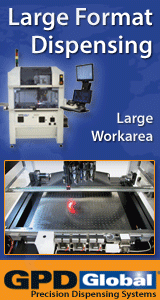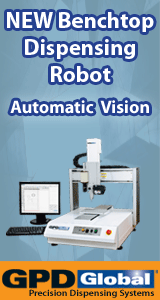Printed Circuit Board Assembly & PCB Design Forum
SMT electronics assembly manufacturing forum.
- SMTnet
- »
- Electronics Forum
- »
- through hole questions
through hole questions
Views: 5480
![]() So we all know through hole assembly hasn't been completely ...
- Nov 17, 2014
by
gregp
So we all know through hole assembly hasn't been completely ...
- Nov 17, 2014
by
gregp
![]()
![]()
![]() this requires a huge answer.
Why do you ask?
...
- Nov 17, 2014
by
adam
this requires a huge answer.
Why do you ask?
...
- Nov 17, 2014
by
adam
![]()
![]()
![]() Hi Adam,
Good question. I know I am seeking a lot of detai...
- Nov 18, 2014
by
gregp
Hi Adam,
Good question. I know I am seeking a lot of detai...
- Nov 18, 2014
by
gregp
![]()
![]()
![]() Interesting, see we used to do a large amount of PTH but we ...
- Nov 19, 2014
by
adam
Interesting, see we used to do a large amount of PTH but we ...
- Nov 19, 2014
by
adam
![]()
![]()
![]() Thank You Adam...this is the type of input I am looking for....
- Nov 19, 2014
by
gregp
Thank You Adam...this is the type of input I am looking for....
- Nov 19, 2014
by
gregp
![]()
![]()
![]() your summary is pretty accurate! yeah our justification on t...
- Nov 19, 2014
by
adam
your summary is pretty accurate! yeah our justification on t...
- Nov 19, 2014
by
adam
![]()
![]()
![]() Hi Spoilt...thanks for your reply. The latter part of your ...
- Nov 19, 2014
by
gregp
Hi Spoilt...thanks for your reply. The latter part of your ...
- Nov 19, 2014
by
gregp
![]()
![]()
![]() Hi Adam...thanks for your follow up comments. The auto inse...
- Nov 19, 2014
by
gregp
Hi Adam...thanks for your follow up comments. The auto inse...
- Nov 19, 2014
by
gregp
![]()
![]()
![]() We process an average of 300 units per batch with spikes to ...
- Nov 20, 2014
by
adam
We process an average of 300 units per batch with spikes to ...
- Nov 20, 2014
by
adam
![]()
![]()
![]() gregp:
Our PTH process has not changed in many years. Our...
- Nov 20, 2014
by
J_Dub
gregp:
Our PTH process has not changed in many years. Our...
- Nov 20, 2014
by
J_Dub
![]()
![]()
![]() Hi Adam,
So with two to three people on the slide line, eac...
- Nov 21, 2014
by
gregp
Hi Adam,
So with two to three people on the slide line, eac...
- Nov 21, 2014
by
gregp
![]()
![]()
![]() Hi J_Dub (Joe),
Thanks for the input. Sounds like some fai...
- Nov 21, 2014
by
gregp
Hi J_Dub (Joe),
Thanks for the input. Sounds like some fai...
- Nov 21, 2014
by
gregp
![]()
![]()
![]() Hi Spoilt,
Thanks again for the feedback. It is really an ...
- Nov 21, 2014
by
gregp
Hi Spoilt,
Thanks again for the feedback. It is really an ...
- Nov 21, 2014
by
gregp
![]()
![]()
![]() On average there are about 3 parts per board that get hand p...
- Nov 21, 2014
by
J_Dub
On average there are about 3 parts per board that get hand p...
- Nov 21, 2014
by
J_Dub
![]()
![]()
![]() Hi J_Dub,
thanks for the continued info...Of course selecti...
- Nov 23, 2014
by
gregp
Hi J_Dub,
thanks for the continued info...Of course selecti...
- Nov 23, 2014
by
gregp
![]()
- SMTnet
- »
- Electronics Forum
- »
- through hole questions







